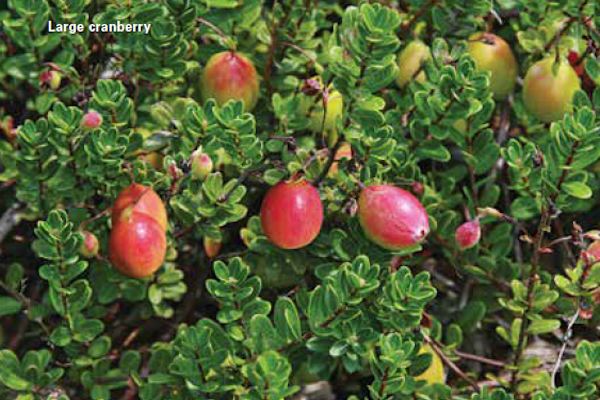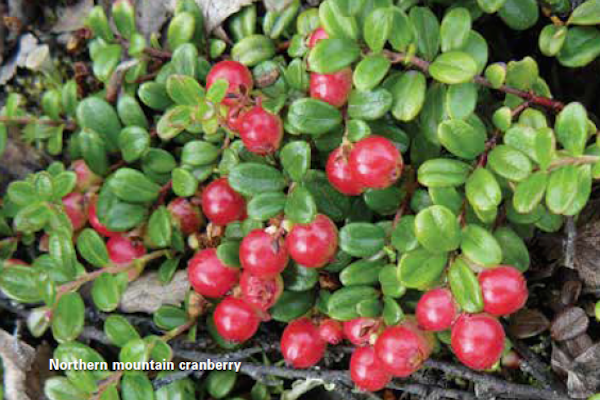Where to Find Wild Cranberries in Minnesota, Wisconsin, and Michigan
Teresa Marrone, author of Wild Berries & Fruits Field Guide of Minnesota, Wisconsin, and Michigan, shares with us where to look for wild cranberries.
HABITAT: Three species of wild cranberry are native to our region: small cranberry (Vaccinium oxycoccus), large cranberry (V. macrocarpon) and northern mountain cranberry (V. vitis-idaea var. minus). All are found in wet, acidic areas such as sphagnum bogs, swampy spots,
and fens.
GROWTH: This ground-hugging trailing plant is technically a subshrub, but it’s viselike in growth habit. Stems are slender and hairless. Cranberry plants often take root at the leaf nodes, forming dense mats.

LEAVES: Smooth, hairless, leathery evergreen leaves grow alternately on the slender stems. Leaves of small cranberry are less than 3⁄8 inch long, lance-shaped with pointed tips, and white underneath; edges are rolled. Leaves of large cranberry are 1⁄4 to 5⁄8 inch long, narrowly oval with blunt tips, and pale underneath, but not as white as those of small cranberry; edges are flat or very slightly rolled. Leaves of northern mountain cranberry are 1⁄4 to 3⁄4 inch long, egg-shaped with rounded tips; undersides have tiny black resin dots (visible with a lens).
FRUIT: A tart, but delicious, red berry. Fruits of northern mountain cranberry and small cranberry grow on stalks at the tip of the stem; those of large cranberry grow along the stem rather than at the tip. Large cranberry has the largest fruits, averaging 1⁄2 inch across; those of the other two species are 3⁄8 inch or less. The fruits of large cranberry look out of proportion to the tiny leaves. There are no toxic look-alikes.

SEASON: Cranberries ripen in late summer to early fall and may persist on the evergreen plants through winter if not eaten by birds.
COMPARE: Several plants with edible berries have similar appearance. Creeping snowberry has white berries; stems and leaves are hairy. Creeping wintergreen has larger leaves, up to 2 inches. Both creeping snowberry and wintergreen smell spicy when crushed. Bearberry has larger leaves, up to 1 inch, which are pointed at the base and broadly rounded at the tip.
NOTES: Cranberries are best when cooked but can be eaten raw.
About the author: Teresa Marrone is the author of more than a dozen outdoors-themed books, including the Wild Berries & Fruits Field Guide series (currently available for four regions of the U.S.) and a new series of mushroom ID guides. She has also written numerous cookbooks about wild foods and has been gathering and preparing wild edibles for three decades. Teresa lives in Minneapolis with her husband, Bruce, and enjoys shooting photos of mushrooms, berries, other plants, and all things wild in the area surrounding their property abutting Minnesota’s Boundary Waters Canoe Area Wilderness.
Teresa Marrone has been gathering and preparing wild edibles for more than 20 years. Let her share that experience with you!
If you enjoyed this post, sign up for our newsletter here.


